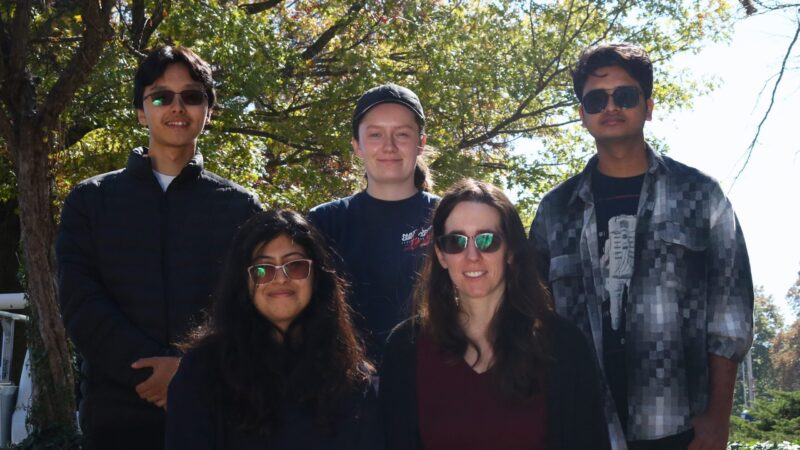There are more than 5,500 confirmed planets around other stars. How should we make sense of these newly discovered worlds?
Four Missouri State University students are trying to uncover more about the universe through their research on planets.
The students, who are majors in the department of physics, astronomy and materials science (PAMS) at MSU, recently presented their research at the 243rd Meeting of the American Astronomical Society (AAS).
Hosted in New Orleans, Louisiana, from January 7-11, thousands of scientists participated in the conference, which covered topics ranging from black holes to planets and everything in between. They attended workshops and presented projects in their research area.
“These projects are advancing our understanding of how larger outer planets like Jupiter influence the inner planets of the systems, including Earth,” said Dr. Sarah Morrison, assistant professor of astronomy at MSU. “They present research to other scientists in the field and get to network with other scientists. They also learn about future career opportunities.”
Sharing their work
Bishwash Devkota
Devkota is an undergraduate student from Gorkha, Nepal. As a physics major on the astronomy and astrophysics track, he researches changes in the paths of orbits of planets in a system in the presence of a Jupiter like planet.
Devkota plans to pursue a career in orbital dynamics. His favorite part of the conference was learning about the use of pulsars, a rapidly rotating black hole used as a telescope.
“It was amazing to hear from the scientists who did the project,” Devokota said. “There were many people there with different ideas and experiences to learn from.”
Simarpreet Girn
Girn is an undergraduate student from Tracy, California. She is majoring in astronomy and astrophysics, as well as applied mathematics. Her research discussed the outcomes of inner planet formation in the presence of an outer Jupiter like planet.
“I want to find out if planets slightly larger than Earth can form with a giant like planet present,” Girn said.
During this conference, Girn enjoyed meeting with other researchers in her field.
“I think the most valuable thing a student can do at a conference is network,” Girn said. “It makes me a better researcher and communicator due to these connections.”
Mateo Guerra Toro
Toro is a graduate student in the Master of Natural and Applied Sciences program. He is from Ambato, Ecuador, and is working toward a specialization in PAMS. His research follows the forming of near resonant inner planets in the presence of a larger outer planet like Jupiter.
Toro said he enjoyed presenting and seeing other scientists excited about his research. His favorite part of the conference was meeting people with similar goals and interests to his all-in-one place.
“Research opens a door to discovering new things and delivering new methods to make new science,” Toro added. “I’m grateful to leave even a small contribution to the field.”
Caroline Witt
Witt is an undergraduate student from Chillicothe, Missouri majoring in PAMS. She studies the history of inner planet formation in the presence of a larger outer planet like Jupiter. Her research focuses on developing and analyzing data from planetary simulations.
“My favorite part of the conferences was connecting with other scientists and experts in my field,” Witt said. “I can explore a variety of topics in astronomy to better centralize on my future education and career.”
Witt added she is excited to continue her research to see what boundaries she can explore next.
Explore opportunities in physics, astronomy and materials science

